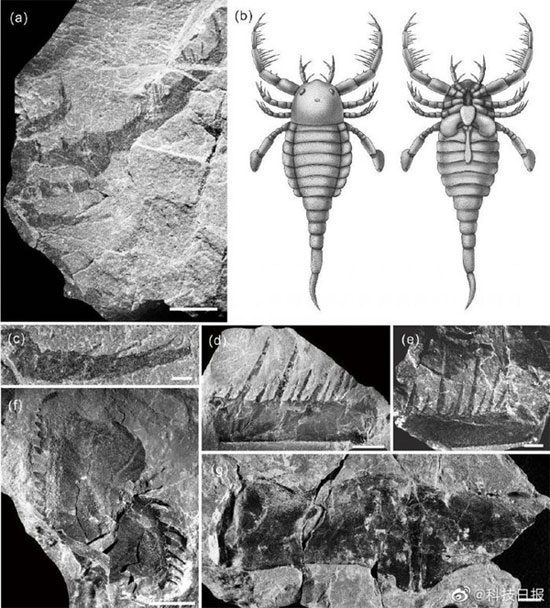A recent study published in the international journal “Scientific Reports” reveals that a research team from the Nanjing Institute of Geology and Palaeontology, Chinese Academy of Sciences, has discovered a new species of horseshoe crab in southern China: Tushan Giant Crab.
The Tushan Giant Crab measures nearly 1 meter in length, featuring long, stiff spines on its appendages, a high density of these spines, and a tail resembling that of a scorpion. The appendages are considered essential for immobilizing prey, highlighting the crab’s formidable predatory capabilities.

Fossil of the new species of horseshoe crab in China. (Photo: Sohu)
Horseshoe crabs are an important group of arthropods that thrived in ancient times and are closely related to modern spiders. Due to their scorpion-like appearance, they are often referred to as marine scorpions. Horseshoe crabs first appeared in the Ordovician period, reached their peak during the Silurian, and subsequently declined, becoming completely extinct by the end of the Permian period.
The limited number of fossils has constrained scientists’ understanding of the morphological diversity, geographical distribution, and evolution of horseshoe crab species. The fossils discovered this time are relatively well-preserved, showcasing genital appendages, tails, body patterns, and many other characteristics, providing evidence for discussions on the morphological diversity of this species.
Based on morphological analysis and phylogenetic studies, researchers have identified the evolutionary position of this species within the horseshoe crab family in China. As an arthropod with sharp appendages, the Tushan horseshoe crab may serve as a top predator in shallow aquatic environments.





















































